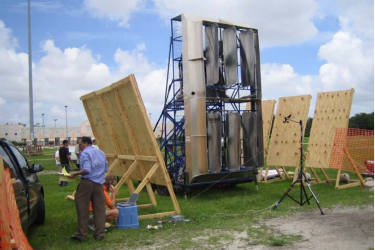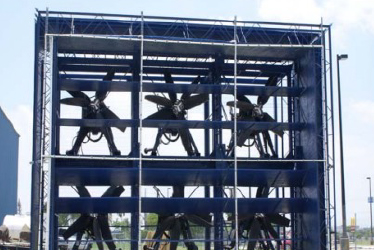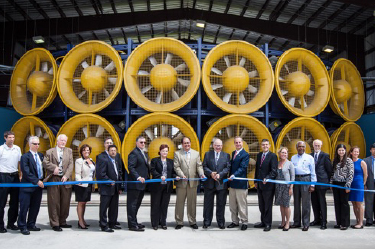The NHERI Wall of Wind (WOW) Experimental Facility (EF) at Florida International University (FIU) was funded by NSF to be a national facility that enables researchers to better understand wind effects on civil infrastructure systems and to prevent wind hazards from becoming community disasters.
The NHERI WOW EF is powered by a combined 12-fan system capable of repeatable testing in up to 157 mph wind speeds through its flow management system. The unique advantage of the NHERI WOW EF is multi-scale (full-scale to ~1:50) and high Reynolds number simulation of the effects of wind and wind-driven rain. This is accomplished using the twelve fans and a water spray system.
In addition, the 16,000 sqft. fenced-off secure area enables researchers to plan and perform destructive tests for up to Category 5 Hurricane wind speeds. The NHERI WOW EF uses a wide range of equipment, instrumentation, and experimental simulation protocols, as well as a distinguished group of faculty, staff, and a well-trained team comprised of technical and operations personnel that allow for the delivery of world-class research.

In 2005, the FIU International Hurricane Research Center (IHRC) developed the 2-fan mobile Wall of Wind, which used two 450 HP gasoline engines to generate 120 mph winds and included a water-injection system to simulate horizontal rain. Tests were done on light commercial roofs, barrel tile roofs, and rainwater intrusion under eaves.

In 2007, the larger RenaissanceRe 6-fan Wall of Wind (sponsored by RenaissanceRe Holdings Ltd.) used six 500 HP gasoline engines with the ability to simulate hurricane wind characteristics and engulf large-scale structures. It had the capability of generating 125 mph wind speeds with wind-driven rain in a realistic simulation of hurricane wind and rain interactions with buildings.

In 2012, the current 12-fan Wall of Wind was developed, and uses twelve fans, each powered by a 700 HP electric motor, for a total of 8,400 HP for the entire system. This large-scale hurricane research and testing facility is capable of reaching Category 5 wind speeds of 157 mph and can also be supplemented with wind-driven rain. The mean and turbulence wind parameters, closely matching hurricane characteristics, are achieved through the application of a special flow management device.